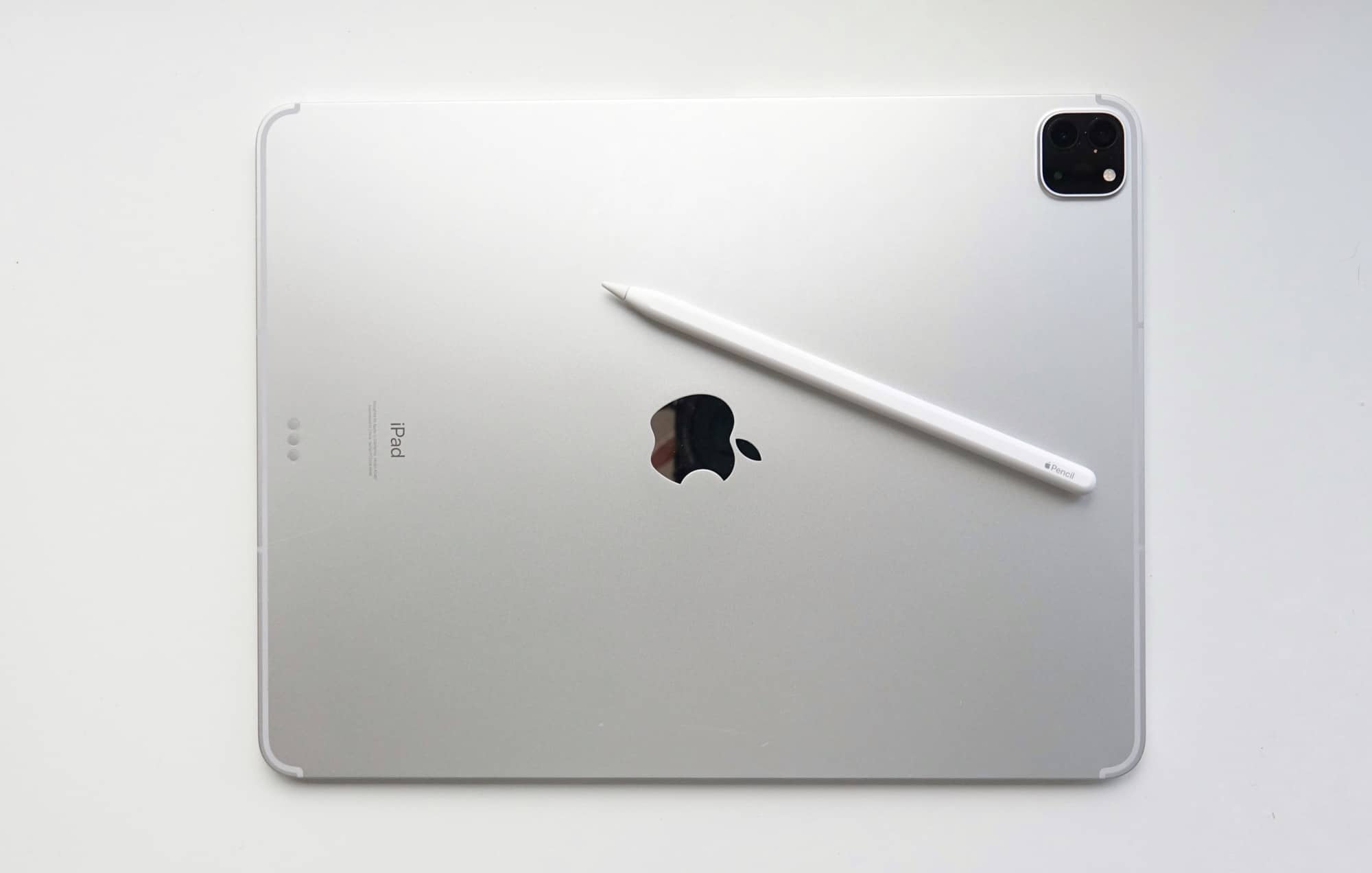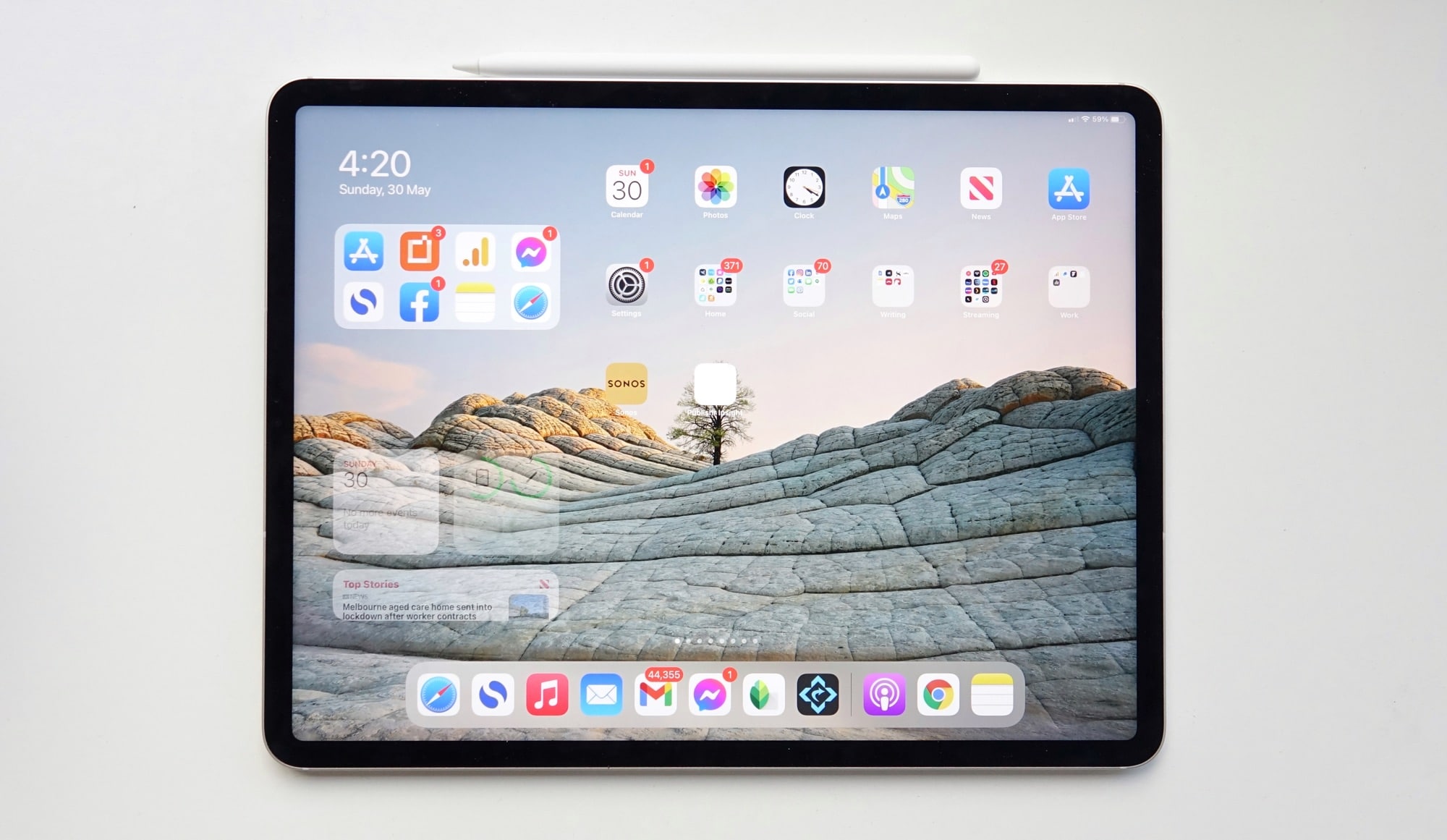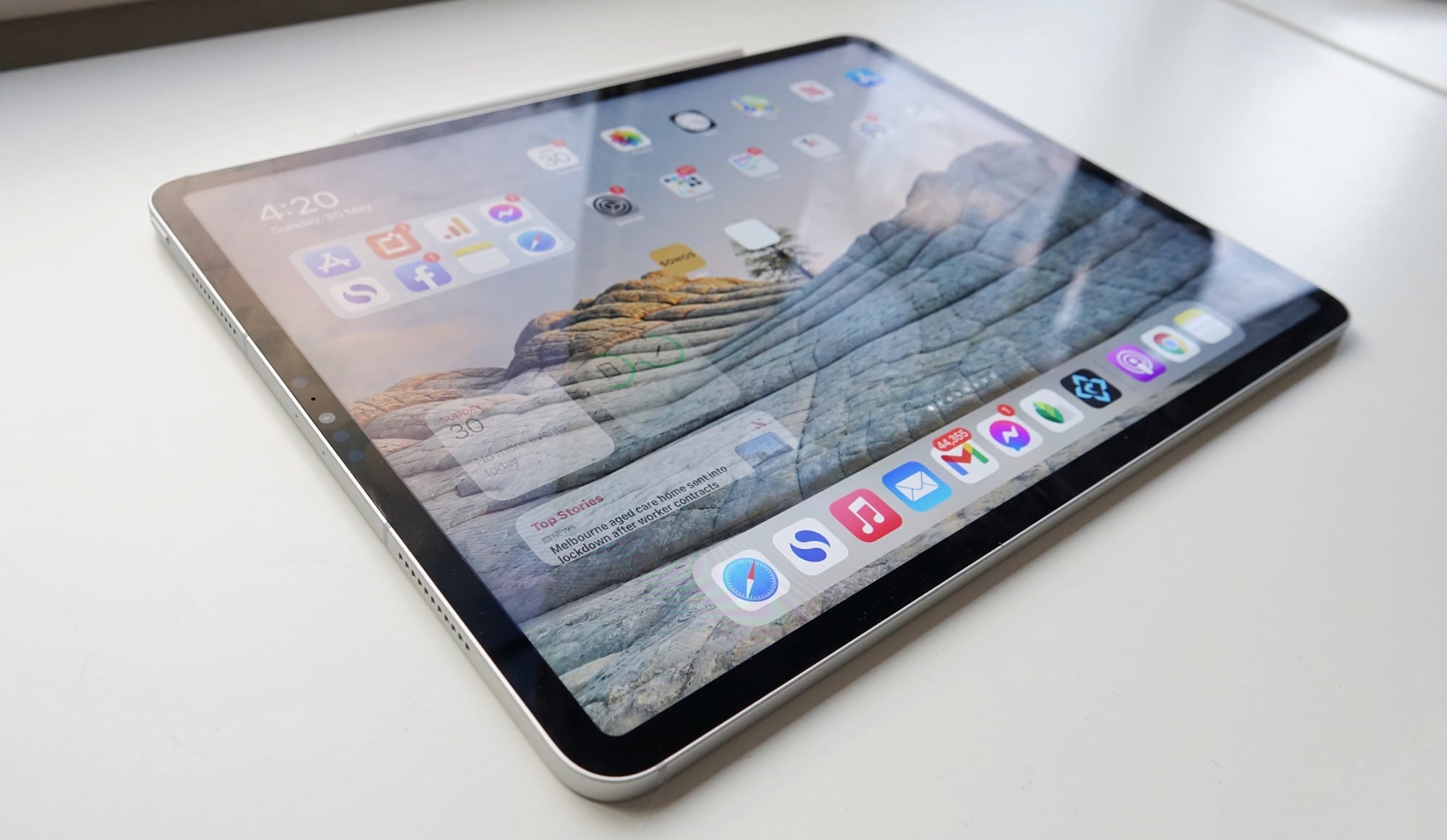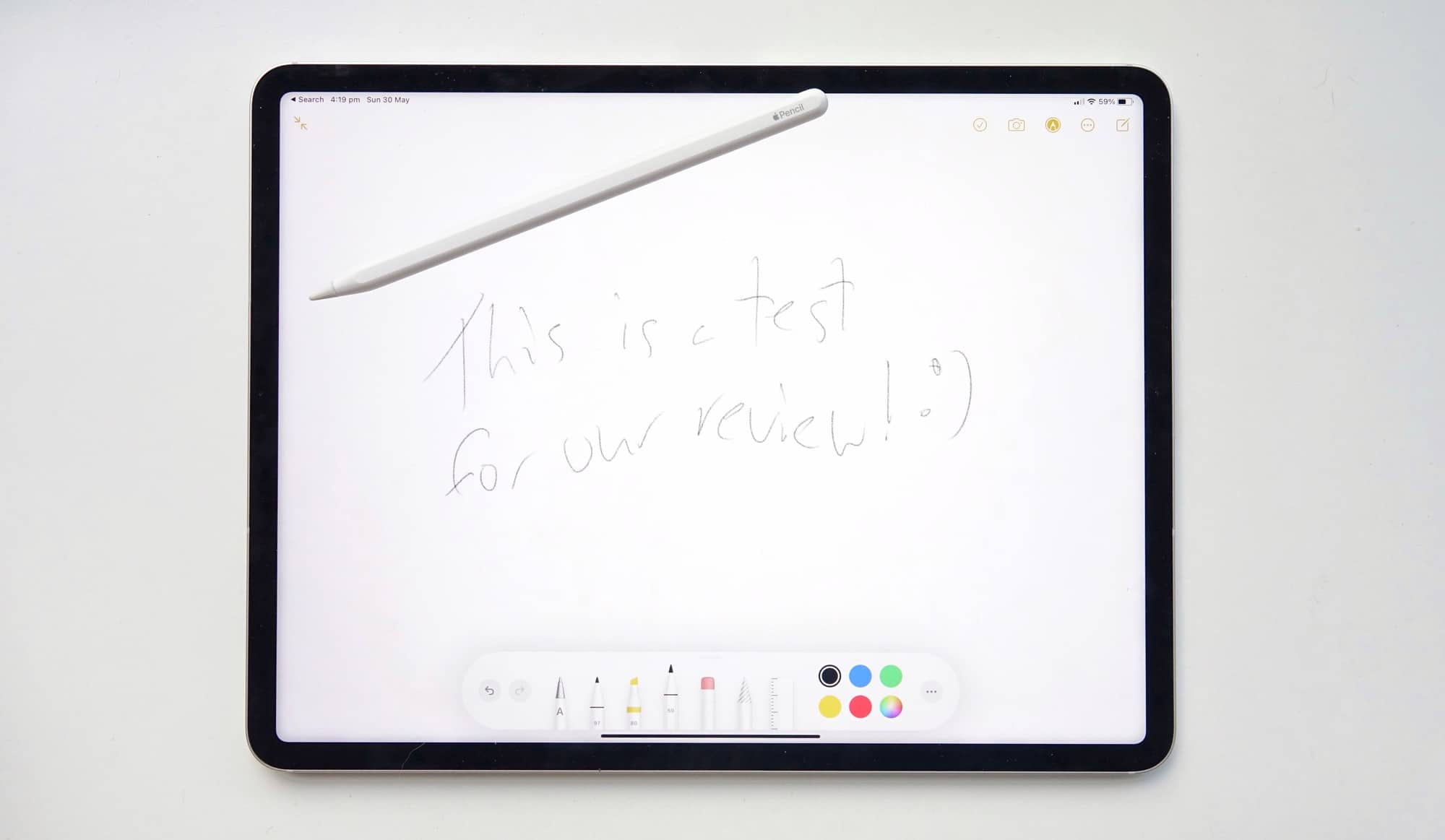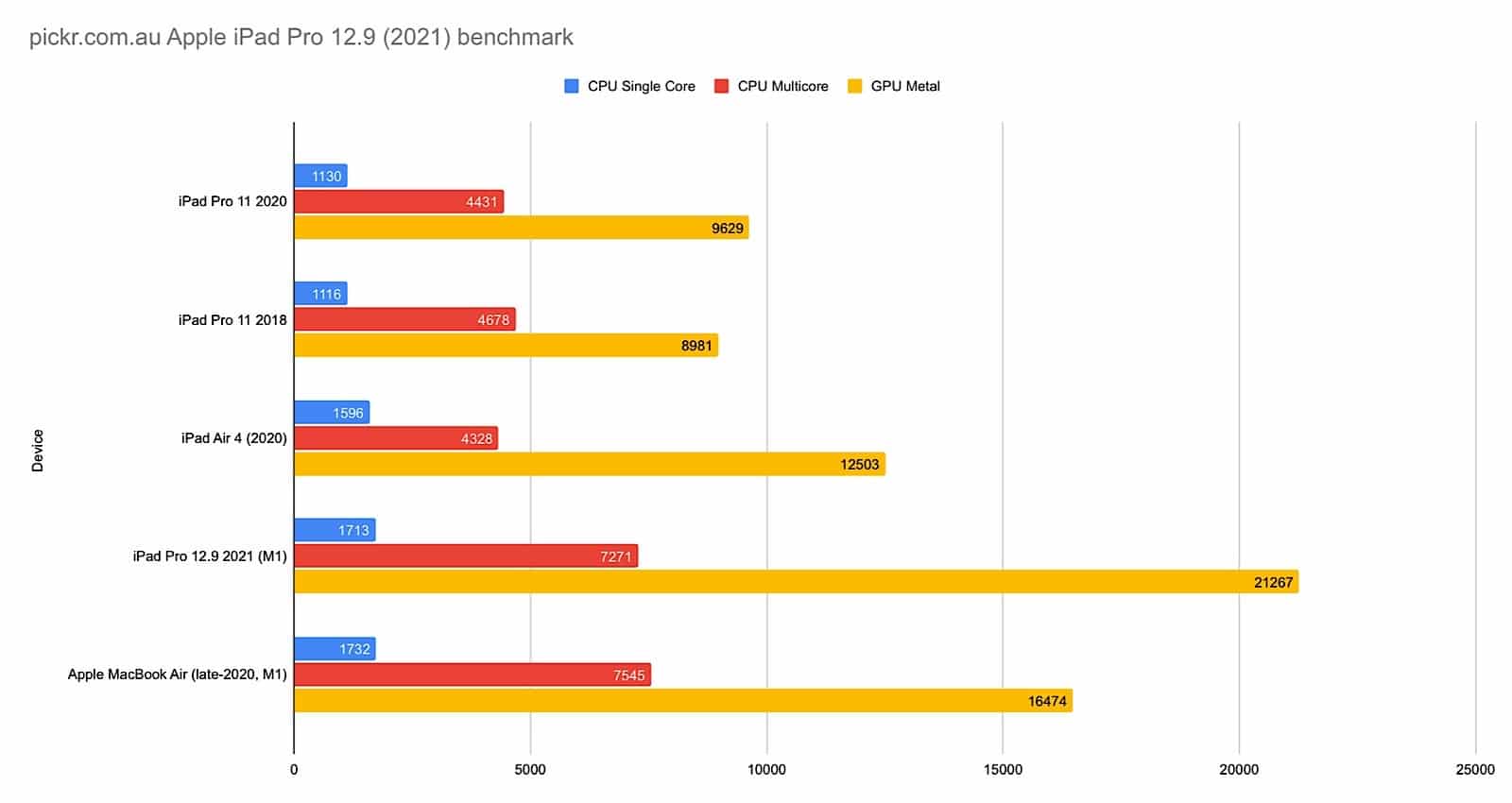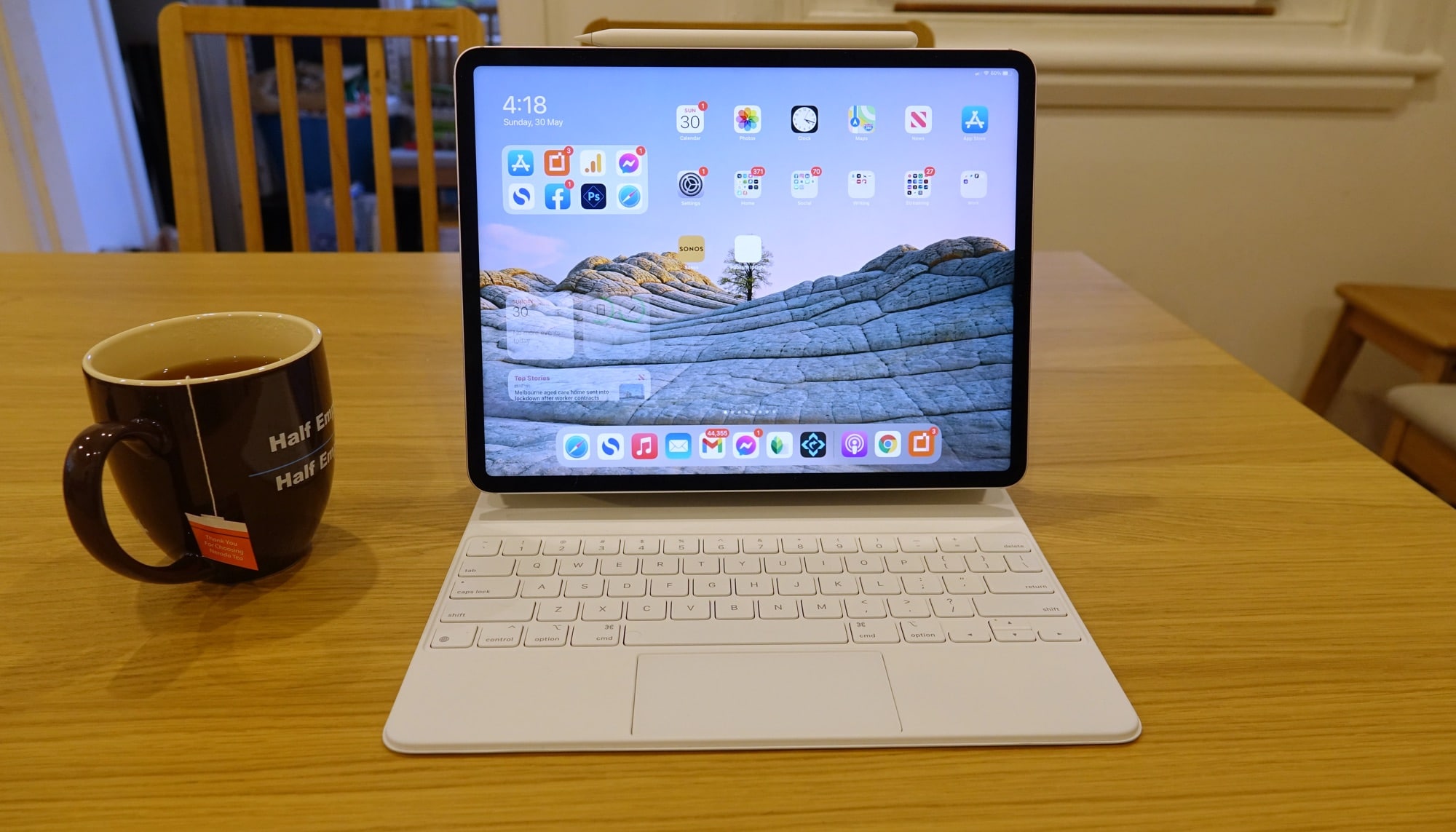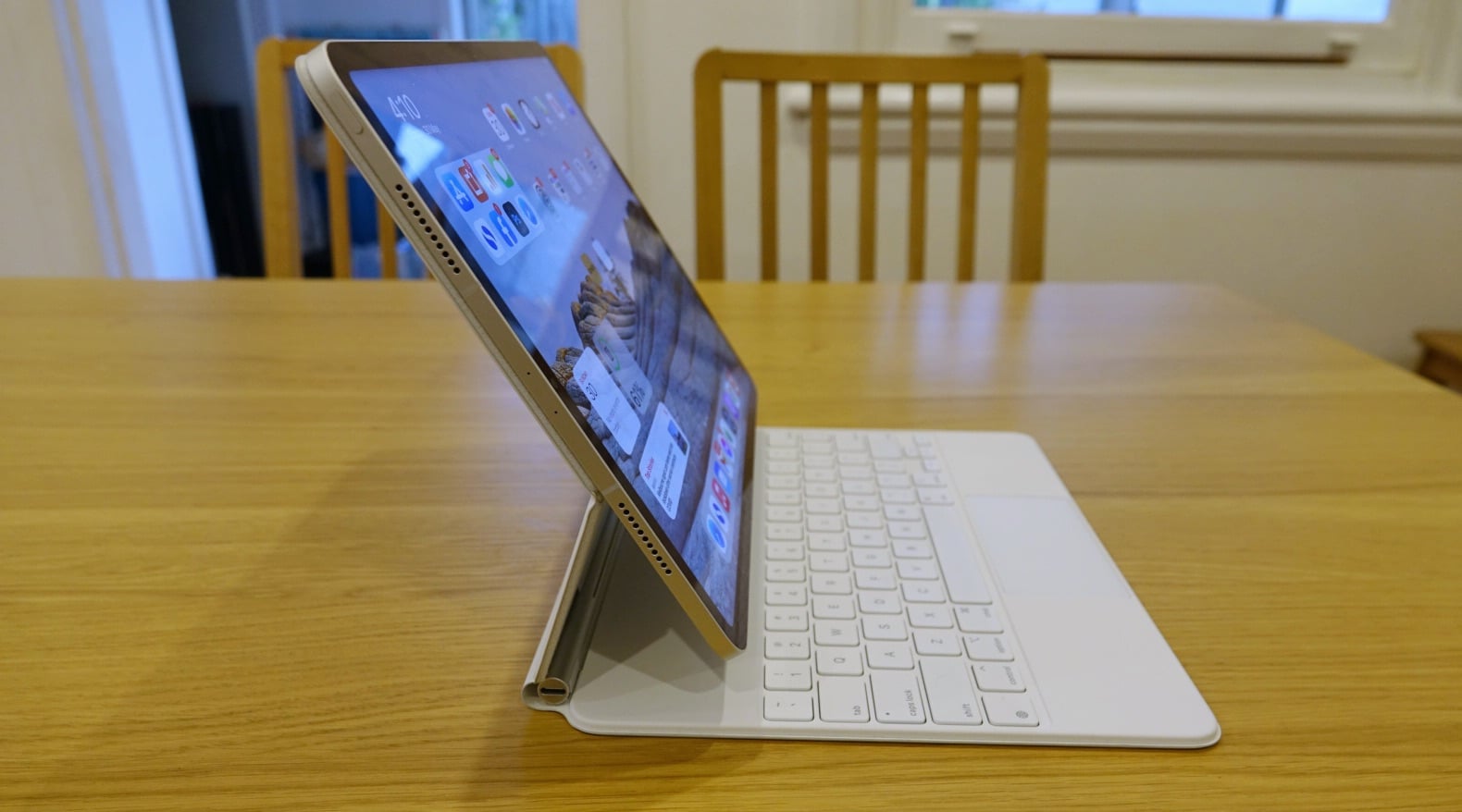Quick review
The good
The not-so-good
The 2021 iPad Pro is more like a computer than Apple’s tablet has ever been, but is it a true computer replacement? Let’s find out.
The iPad has been around for over 11 years, and the iPad Pro for around six, and we’re finally seeing Apple’s tablet become something else.
The iPad Pro has long been about providing a more developed future-friendly approach to iPad design, giving it a wired keyboard and a more impressive set of hardware, but in 2021, Apple is making a leap to somewhere else, as well: it’s turning the iPad Pro into something more like its other computers.
With one chip change, the iPad Pro might could grow in leaps and bounds, and that’s not all Apple is bringing in this 2021 iPad Pro generation. What’s new, and is it enough to keep the iPad Pro at the top of the tablet game?
Design
A few years in, Apple is keeping its edged approach to iPad Pro design, so much that you’d be hard pressed to notice anything is different between last year’s iPad Pro and the iPad Pro we’re reviewing this year.
They’re the same, with a design that feels like it connects better with the current crop of iPhones in the iPhone 12 and iPhone 12 Pro ranges, but just made bigger. If you think of the design of the 2021 iPad Pro as an oversized iPhone 12, you’re kind of there, only without the glass back. It’s all metal here, with the glass covering the front and the front alone.
You will find a magnetic port on the back, of course, but that’s for plugging in accessories.
Features
Before you plug in anything, you should look at what’s in this year’s iPad Pro, because if you saw it at first glance, you might think it’s the same. That identical design from last year graces this model, which now fits in line with what Apple offers on its iPhone range, so that’s nice.
However, what’s beneath is very different, as Apple takes a page from its MacBooks, and uses the chip used in the Apple Silicon MacBook Air and MacBook Pro 13, both of which were released last year.
Under the hood, the 2021 iPad Pro sports the Apple Silicon M1 chip, paired with 8GB RAM on a 128GB, 256GB, or 512GB model, while the 1TB and 2TB iPad Pro models see 16GB RAM inside. That memory difference doesn’t matter if you opt for the 11 inch or 12.9 inch iPad Pro, because it’s the same regardless, as is most of the other hardware differences.
Whichever you look at, you’ll find support for 802.11a/b/g/n/ac/ax WiFi 6, Bluetooth 5, and if you opt for the cellular model, support for 5G over either eSIM or a nanoSIM slot. That’s your wireless options sorted, with wired handled through one port: a Type C port at the bottom supporting Thunderbolt 3 and USB 4.
Multimedia is catered for with much the same camera choice as last time, supporting a 12 megapixel F1.8 camera on the back and a 10 megapixel F2.4 ultra-wide next to it, plus the LiDAR camera for augmented reality on the back, as well. On the front, there’s a 12 megapixel ultra-wide TrueDepth camera, too.
All of this is incased in an aluminium body, with five microphones and four speakers, plus a magnetic port on the back for connecting the keyboard accessories, and a magnetic strip on one edge for attaching an Apple Pencil.
All that leaves is the screen itself.
Display
On the 12.9 inch 2021 iPad Pro, that screen is one of the defining features, and a huge point of distinction between it and the other iPad models. Really, between it and any other computer out there.
Much like how the biggest iPhone 12 — the iPhone 12 Pro Max — offers a camera unlike any in the range, the biggest iPad model gets something unlike anything else in the range, too: a screen with thousands of tiny little LEDs acting as the backlighting system for the LCD panel.
No, this isn’t an OLED like in the iPhone, but it’s kind of the next best thing, with Apple adopting Mini-LED technology, the same hardware currently used in the high-end TVs that aren’t made with OLED coming from Hisense, LG, Samsung, and TCL this year.
Essentially, Mini-LED uses lots of smaller-than-normal Light Emitting Diodes as a way of controlling how the screen is lit up, providing brighter displays, but also more precise darker areas, as well. It’s not quite OLED, which tends to be the best for blacks because an organic LED can show black by switching off, but it’s still an impressive outcome, and basically serves as the middle ground for OLED. In short, if you can’t get an OLED panel, the next best thing is Mini-LED, and that’s what Apple is using here in the 12.9 inch iPad Pro. You won’t find one in the 11 inch 2021 iPad Pro, mind you, so it’s specifically a part of the big boy.
What does this mean for you?
These thousands of tiny LEDs actually provide a crazy 2596 dimming zones to deliver a brighter and more precisely controlled picture, capable of a some super bright imagery if you need it. Sure, it’s not an OLED, but Apple’s Liquid Retina XDR — a mouthful of marketing to be sure — is the next best thing, at least until Apple delivers an OLED screen for its tablets.
The screen itself runs at resolution better than Full HD, sporting 2732×2048 on the 12.9 inch iPad Pro, which in turn gives a pixel clarity of 264 pixels per inch, higher than the MacBook Pro 13’s 227 pixels per inch on its 2560×1600 display.
In-use
With a bright and sharp screen on offer, using the M1 iPad Pro is as easy as it ever was, offering lovely colours and crisp contrast, helped in part by one of the best touchscreens you can find.
That’s helped by Apple’s ProMotion technology, which adjusts the refresh rate of the screen from 24Hz to 120Hz based on what you’re doing at the time, with the 120Hz speed mostly for the Apple Pencil, which gives you a faster pencil-to-screen drawing reaction, basically emulating the real thing without as much sense that you’re writing on a screen and not paper.
There’s also a new front-facing camera here, with a 12 megapixel ultra-wide camera that can deliver a wider view port of you for those ongoing video chats you know you’ll need, but that’s not even the cool feature here.
Apple offers a feature called “Centre Stage” which is basically like an automatic tracking mode when you’re on a video chat. Think of this as a crop and pan mode for the selfie camera, but where it does it inside the view without moving something. It’s a different concept from how Amazon physically moves the Echo Show 10 to match where you are, but a similar result, and means you don’t have to be stuck in the same place, because Centre Stage will keep tracking you.
And, of course, there’s the Face ID dot projector tech here, too, first seen on the iPhone X, but which works with an infrared camera and illuminator you can’t see to let you unlock your iPad in day and night. Handy.
Performance
While the screen features one of the main upgrades in the 2021 iPad Pro 12.9, the chip is probably a little more important, and that’s because of what it is and what it’s designed to.
And that leads you to what is perhaps the most unsurprising part about the new iPad Pro this year: this is about the best performing tablet you can find, thanks in part to what lies underneath.
Underneath the big screen of the 2021 iPad Pro is Apple’s M1, the same chip used in the excellent 2020 M1 MacBook Air and the 2020 M1 MacBook Pro 13, both of which saw simply staggering performance balancing high speed with remarkable battery life.
And because it’s the same chip in the iPad Pro, the performance is nothing short of a chef’s kiss.
Frankly, we didn’t find a way to jam this thing up, and regardless of what iPad app we used, the iPad Pro would just keep on keepin’ on. It’s about as solid a performance as any device out there, and never lets up.
Battery
There’s a pretty sizeable battery here, too, with one that offers as much as ten hours of battery life, though it will be dependent on what you do.
For the few days we’ve been testing the 2021 iPad Pro 12.9, we found near that, though it varies based on use and how much power those apps require. Sufficed to say, you should be able to get a good work day on this tablet, but we’d probably pack a small USB Type C charger in your bag if you were concerned, and if you decided to take advantage of a cellular iPad Pro and connect on 5G, which consumes just a little more juice.
Throughout our 2021 iPad Pro review tests, we found the workday of life was possible, but we did find it was managing closer to 6 to 8 hours as we worked. Your life will depend on a bunch of factors, but if you’re used to carrying around a big laptop and want to switch to the tablet instead, the other upside is that your charge cable is much smaller as well, handy for if you do need to bring that little semblance of safety in your hand luggage.
Value
Value, however, is a hard argument for the 2021 iPad Pro. Sporting a positively massive price tag that rivals even Apple’s laptops, the M1 iPad Pro is not an inexpensive computer, though you are getting top of the line hardware, so we’re not thoroughly surprised.
Trying to put the price of this iPad into perspective is difficult, because it’s basically a choice between great laptop and great tablet, even though they are very similar in capabilities.
Apple offers a pretty much identical performance in the M1 MacBook Air, which offers a 13 inch computer without a touchscreen and yet with the keyboard, while the M1 iPad Pro 12.9 is practically a 13 inch computer that you can buy a keyboard for.
Price-wise, it’s a pretty staggering cost, nearing the MacBook Air, which at $1849 for the 512GB MacBook Air and $2099 for the 512GB iPad Pro 12.9, well, let’s just say it raises some questions. The iPad Pro lacks a keyboard at that price, which will set you back an extra $299 for the fabric style or $549 for the Magic Keyboard, making it even more expensive overall.
Officially, the M1 iPad Pro 12.9 starts at $1649 for the 128GB model which still feels rather pricey, and still leaves the MacBook Air as clearly better value, but if you’re thinking about the 12.9 inch M1 iPad Pro, there’s a good chance you’re not really worried about value overall. You just want the best of the best of the best, which in 2021, this clearly is.
What needs work?
Beyond that eye-watering price, it’s hard to see anything wrong with the 2021 iPad Pro. This thing is a beast. It’s a truly capable portable.
But it’s also one where you mightn’t be sure if you’re getting the full power just yet, and that appears to come down to a software and solution side of things.
Sure, it still misses out on water resistance, a bug bear of ours that Apple only fixes on its phones, but that’s not our real issue with the M1 iPad Pro.
Much like how we haven’t seen a real reason to take advantage of 5G’s impressive speeds — beyond faster downloads, there’s no major groundbreaking benefit to consumers just as of yet — Apple’s M1-equipped iPad Pro suffers from the same question mark: Apple has brought the power, we just need to see the software that’s really dependent on all that prowess.
You might find it if you’re a video editor, with apps such as LumaFusion, or playing with some machine learning in select apps. But finding the apps, that’s the hard part. Specifically, finding iPad apps that can take advantage of the guts the M1 offers isn’t easy, and that might come down to a lack of cross-platform compatibility.
What the M1 iPad Pro needs
The thing about this lack of M1-specific apps is that it will take time for developers to really take advantage of what’s here, of course.
However what the M1 iPad Pro really needs is cross-platform support for macOS apps, and here’s why: computers with Apple’s M1 are based on a similar framework to what was already used in the iPhone and iPad, which made it possible for them to run iOS and iPadOS apps alongside macOS apps. That should mean it’s possible for macOS apps to run on the M1 iPad Pro, and yet that’s not the case at all.
What’s missing from the M1 iPad Pro is more of that cross-platform love, which is sadly missing in action.
On the M1 MacBook Air and M1 MacBook Pro, you can run apps made for macOS and apps made for the iPad Pro side-by-side (and the same is likely true with the M1 Mac Mini and the new M1 iMac, we’ve just not reviewed either). And yet despite running the same chip, the M1 iPad Pro can only handle apps made for the iPad Pro.
It means while the iPad Pro has an identical chip with enormous potential, only the Mac computers get to do run both types of apps at the time of publishing, while the iPad Pro is left with one.
You might look at this and think it’s normal, but the capability of the M1 iPad Pro is such that granting it this support would make it monumentally powerful in terms of what it supported.
Choose the M1 Macs and you have the choice of both types of apps. Choose the iPad Pro and you get one. It’s small, but it’s a small thing that could make all the difference.
We know it’s unlikely Apple will ever make an iPad with macOS on it, even though the two operating systems feel like they’re gradually drawing nearer. And yet we can’t help but feel the M1 iPad Pro could run macOS apps in a container, similar to how the M1 Macs have to run Intel apps in a virtualised environment, something they do thanks to Rosetta2, which does a great job of delivering compatibility in what is otherwise an incompatible environment.
That’s what would make the M1 iPad Pro stand out even more than how it does now. You get a lot of performance for sure in this thing, but you don’t get the software or even choice of software that delivers the full strength of that potential. It’s a little like being told you have the best thing in the world, and having no idea how to prove that it’s the best beyond people telling you that.
For Apple to make this the best thing in the world, it needs to deliver that bidirectional approach to app development, and let people use their iPad however they want, with Mac apps and iPad apps, much like they can on an M1 Mac already.
Final thoughts (TLDR)
It’s strange just how full circle we’ve come. The iPad Pro is now basically Apple’s touchscreen fully-fledged computer, even though the iPad was never quite a MacBook competitor before. And yet it is now, offering MacBook-grade performance for people who need something that isn’t quite a MacBook at all.
Apple never went the way that Microsoft and Windows PCs did, veering away from throwing touchscreens in its computers. It was a move not everyone liked, but it has worked, and the iPad is a different device. Once a content consumption device, an iPad is very much capable of both consumption and creation, and the iPad Pro is essentially the pinnacle of what an iPad can do. With the M1 inside, it’s as powerful as the best of Apple’s other computers, too.
It just needs support for what those other computers run. The iPad Pro is already the top of the class for tablets, but costing more than the MacBooks of the world, it needs to handle both needs well, and that’s something only Apple can bring.
We have to assume we’re going to see support for Mac apps at WWDC 2021, simply because the M1 iPad Pro, as good as it is, feels like it’s a little hamstrung by the software right now. MacOS on the iPad seems like it’ll never happen, and that doesn’t shock us, but if the M1 Macs can handle iPad apps, then the opposite should be good, too. An iPad Pro with an M1 chip inside should be able to run Mac apps, and if we don’t see it this year, we suspect Apple is at the very least thinking about it. Otherwise, why include the chip from its computers at all?
For now, it means folks craving the best performing portable can have it with the best screen and best mobile capability, even if it doesn’t come with the best wallet friendly price. Apple is all about bests with the 2021 iPad Pro, and that’s hard to deny. This is the top of the tablet game hands down. The iPad Pro has enormous potential, but it just needs to finish the software side of things, and the iPad Pro will be unstoppable.
If you’re someone who wants the best tablet around, the M1 iPad Pro 12.9 is an easy recommendation. And if you’re someone betting that Apple will make iPadOS more friendly to Mac apps in the very near future, you’ll probably fall in love, too. Recommended.



